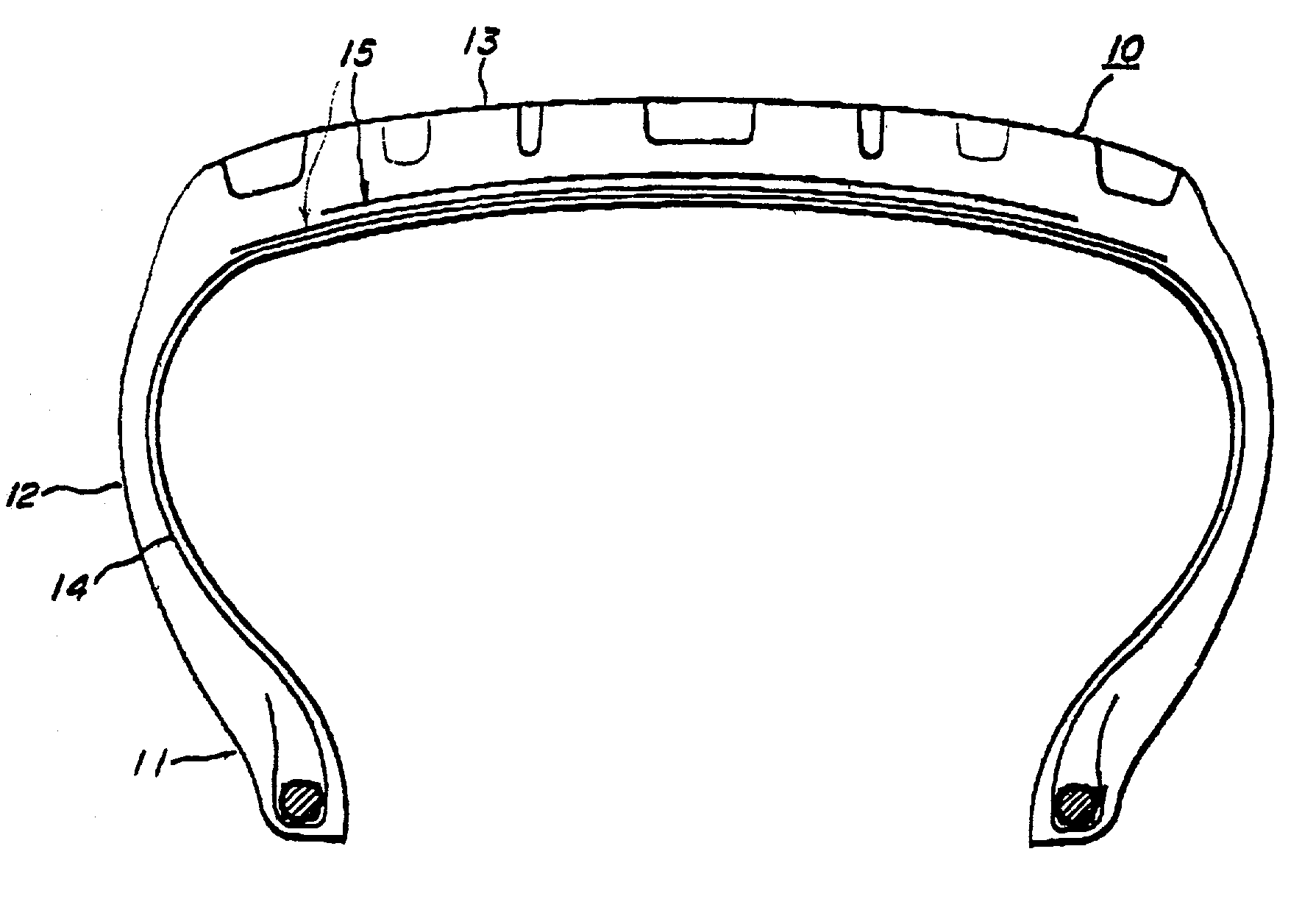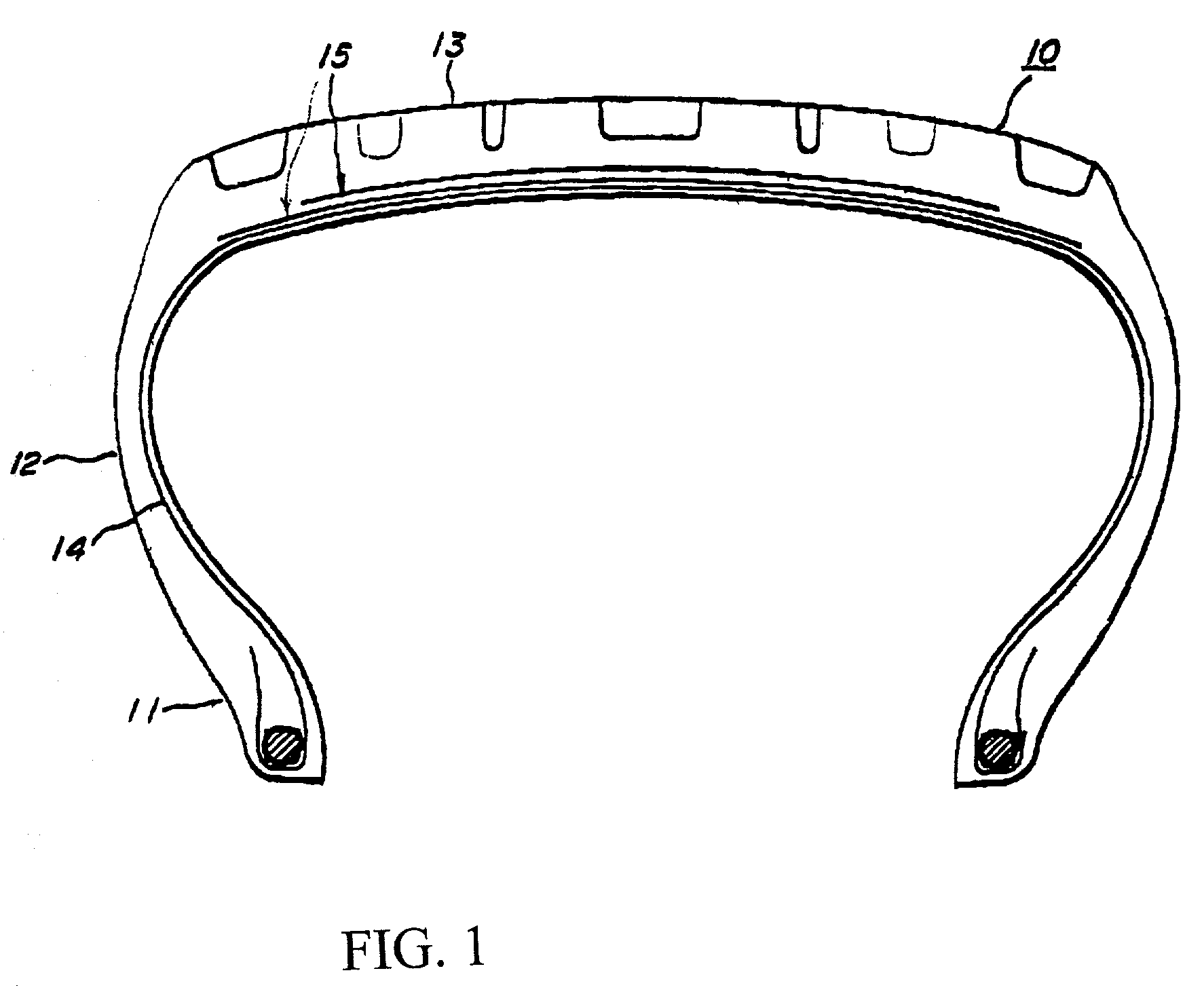Tire reinforced by an elongate composite element of the monofilament type, and such element
a composite element and monofilament technology, applied in the field of pneumatic tires, can solve the problems of limiting the properties of modulus in extension, curvature without achieving permanent plastic deformation, and the majority of uses not being able to avoid
- Summary
- Abstract
- Description
- Claims
- Application Information
AI Technical Summary
Benefits of technology
Problems solved by technology
Method used
Image
Examples
Embodiment Construction
[0014]In passing, we should mention that said elongate composite element, after being manufactured, for example by pultrusion, may be covered with an adhesive layer, for example a layer of resorcinol-formaldehyde latex (RFL) adhesive, in order to permit good adhesion to a sulphur-vulcanisable elastomer, as is well known per se.
[0015]The drawing shows an application which is of very particular interest, but is not limitative, to a tire 10 for a passenger vehicle, comprising a tread 13, two sidewalls 12, and a radial carcass 14 anchored on either side in a bead 11. An elongate composite element of the monofilament type, having the properties indicated, reinforces that part of the tire which is located beneath the tread 13.
[0016]In this specific application, said elongate composite element is arranged in parallel lengths 15 extending from one shoulder to the other, the lengths being arranged in at least two radially superposed plies, the lengths being arranged at angles of opposite sig...
PUM
| Property | Measurement | Unit |
|---|---|---|
| glass transition temperature Tg | aaaaa | aaaaa |
| angle | aaaaa | aaaaa |
| angle | aaaaa | aaaaa |
Abstract
Description
Claims
Application Information
 Login to View More
Login to View More - R&D
- Intellectual Property
- Life Sciences
- Materials
- Tech Scout
- Unparalleled Data Quality
- Higher Quality Content
- 60% Fewer Hallucinations
Browse by: Latest US Patents, China's latest patents, Technical Efficacy Thesaurus, Application Domain, Technology Topic, Popular Technical Reports.
© 2025 PatSnap. All rights reserved.Legal|Privacy policy|Modern Slavery Act Transparency Statement|Sitemap|About US| Contact US: help@patsnap.com


